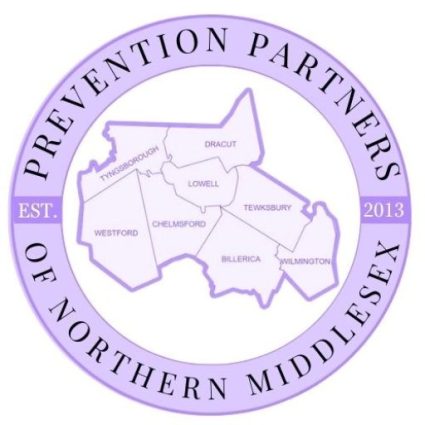Prevention Professionals of Northern Middlesex
Prevention Professionals of Northern Middlesex is an educational website run by the Prevention Professionals of Northern Middlesex. The Prevention Professionals of Northern Middlesex is a coalition of dedicated prevention professionals from eight communities in the Northern Middlesex, MA Region. Communities include Billerica, Chelmsford, Dracut, Lowell, Tewksbury, Tyngsborough, Westford, and Wilmington concentrating on substance use prevention and harm reduction initiatives. The coalition has been around since 2008, and formerly rebranded from the Greater Lowell MOAPC/Tewksbury SAPC Coalition to the Prevention Professionals of Northern Middlesex in 2020. The coalition is made up of professionals from police, public health, EMS, community health, mental health departments that work directly in the community. The Prevention Professionals of Northern Middlesex work to meet the immediate substances use prevention needs of the eight individual communities, while pooling efforts and knowledge to enhance prevention efforts for Greater Lowell as a whole.
Read below to learn more about what our coalition has been up to!

Our Social Media
Check out our Facebook page!
MassCALL3-Greater Lowell (Mc3-GL)
The mission of MC3-GL is to prevent misuse of substances of first use, such as alcohol, nicotine, and cannabis, among youth in each community within the collaborative. MC3-GL communities include Tewksbury (lead), Billerica, Chelmsford, Dracut, Tyngsborough, Westford, and Wilmington. The city of Lowell has received their own similar funding and work closely with us on many projects.
MC3-GL has assessed consumption patterns and trends within the youth population based on the following core-measures:
- Current (past 30-day) use of alcohol, tobacco, marijuana, and any other substances that are the focus of prevention intervention projects.
We examine the risk and protective factors—often grouped together—from the perspective of youth themselves to identify effective strategies for reducing 30-day substance use, using a health equity and trauma informed lens. In other words, we aim to understand why young people choose to experiment with or use substances, even when they may know the risks involved. The following are some of the risk and protective factors across our region, please note there are multiple choices.
Risk Factors
- Mental health- anxiety, depression, self-medication, fear of judgement, fear of judgement, fear of harm, isolation, illness, stigma, coping skills, resilience skills, ways to feel better, easier to take a pill than do the work, and unsteady sleep patterns.
- Family- no support from trusted family/caregiver members, adults not aware of severity, youth are fearful of their parents, access to substances from family and older siblings, supportive or lack of supportive environment, stigma and how we talk about issues, and perceived values.
- Misperception of teen use: youth think that “everyone” is doing it but in reality, that is the complete opposite with most are not using.
- Peer pressure both internal (they feel as though they should be doing it and pressure themselves even if others are looking out for them) and external (bullying, making someone feel bad as they are not joining in the “activities”.
Protective Factors
- Family/caregiver attachment: youth are less likely to use substances if they feel connected to those who love them. Remember, a family can be defined in many ways, but the point is…do they feel connected and safe?
- Belief in moral order: teens tend to do better when there is structure and a strong moral code (although they will not tell you this, it remains true).
- Opportunities and belief in a pro-social environment. This can go both ways. When parents or caregivers disregard simple laws—like not wearing a seatbelt, smoking in public, or allowing youth to have a “sip” of wine at dinner—they may unintentionally model risky behavior. Youth often mimic their role models, making these actions potential risk factors. On the other hand, when parents and caregivers consistently follow these basic rules, they send a clear message: a pro-social environment isn’t just encouraged, it’s expected. Their actions reinforce healthy norms and create a culture where positive behavior is the standard—not the exception.
Other critical risk and protective factors across our region.
- Perception of risk of harm surrounding use; do they believe that the using substances, even one time, can be dangerous and have permanent consequences?
- Perceived peer disapproval of use; do my peers approve of use?
- Perceived parental/caregiver disapproval; do my parents/caregivers approve of use?
For more information on risk and protective factors visit Risk & Protective Factors — Communities That Care
